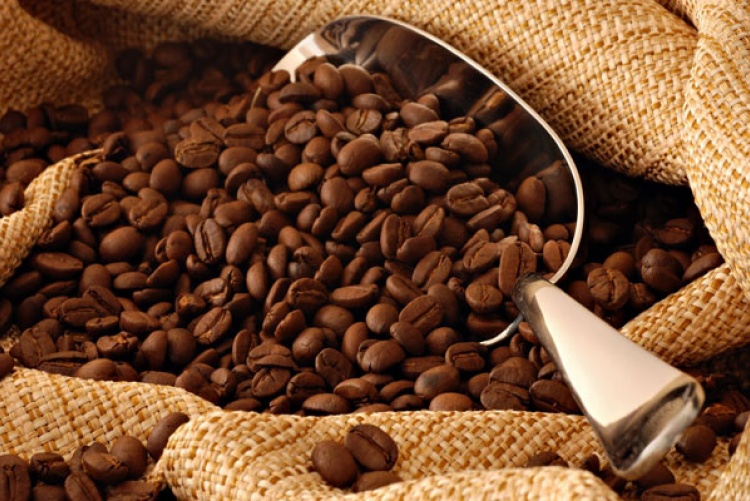Background
Coffee was introduced in Côte d'Ivoire by Governor Angoulvant, in the early twentieth century. Its expansion followed the timeline below:
- In 1881, coffee plantations were established in the region of Assinie by Verdier and Brétignière
- Around 1925, European farmers settled to grow coffee; coffee production increased through forced labor
- In 1930, plantations were created in Bingerville, Gagnoa and Lahou, then Daloa and Bouaflé
- From 1934, there were 300,000 hectares of coffee farms, one eighteenth of which belonged to European companies or individuals
- In 1959, Côte d'Ivoire was the third largest exporter of coffee, after Brazil and Colombia with more than 100,000 tons. It retained this ranking for nearly 30 years
- In the 1990s, Ivorian coffee production declined from 250,000 tons in 1990 to 145,000 tons in 1994.
Importance of coffee in the economy:
Formerly the leading source of income, with 10% of gross domestic production and 35% of agricultural exports, coffee (130.6 million euros) represented 1.4% of Côte d'Ivoire's exports with 130 800 tons in 2013. It is the sixth largest export crop after cocoa, cashew nuts, cotton, palm oil and natural rubber
Production
Coffee is grown in the entire forest area of Côte d'Ivoire, as follows:
West: Moyen Cavally and Mountains Regions account for the largest production with 72,980 tons in 2001;
Central-West: Marahoué, Fromager and Haut Sassandra Regions represent the second largest coffee production zone with about 50,900 tons in 2006, representing 42% of national production;
South-West: Bas Sassandra region produced 17,056 tons of coffee in 2006 (14% of national production). In recent years, however, the region has seen a strong conversion of coffee farms into rubber and palm oil plantations;
South: namely, the regions of Lagunes, Agneby and Sud Bandama. In 2001, this zone accounted for 20.5% of coffee-producing households in Côte d'Ivoire. This area is dominated by the Divo department, which alone constitutes for 56% of the zone’s production in 2006.
East: Sud Comoé, N'Zi Comoé and Moyen Comoé regions. It is the oldest coffee production area in the country. Although coffee production in this area has been declining for several years, it accounts for a significant share of domestic production (about 16% of domestic production).
Producers
Coffee is essentially the work of smallholder farmers on family farms.
408,000 coffee farmers were surveyed in 1999.
Production Periods
The main campaign stretches from October to March while the intermediate campaign is from April to August.
Tonnage/ performance
In 1999-2000, coffee production in Côte d'Ivoire was approximately 250,000 tons, ranking Côte d'Ivoire in second place in Africa and fourth worldwide.
However, for nearly a decade, production has been falling steadily due to declining world prices and the successive political crises of 1999, 2002 and 2010. Production was 186 720 tons in 2003, 117 000 tons in 2006 and 89 590 tons in 2007 (ranking as 14th coffee producing country globally). In 2011, coffee production fell to only 80 000 tons, relegating the country to the rank of 8th African and 12th world producer. Lately, a small increase is seen with 103 000 tons in 2013 and 105 516 tons in 2014.
Varieties
Varieties produced in Côte d’Ivoire are Robusta and Arabusta.
Preparation
Dry way
Commercialization System
Average Advance sales system (PVAM).
70-80% of the harvest is sold early in order to minimize fluctuations in international prices, thus guaranteeing the prices paid on the farm.
Markets
Exportation mainly towards Algeria
Local Processing
More than 20,000 tons of Robusta cherries are processed into soluble coffee.
Two roasters process 1,000 to 2,000 tons of ground coffee.
The national center for agronomic research (CNRA) has also developed other local products such as cordial coffee (coffee liquor).
Current constraints
- Ageing coffee trees and low production
- High parasitic pressure due to pests and diseases
- Reduced soil fertility
- Precarious living and working conditions of producers
Challenges and opportunities
- Improve productivity to optimize production
- Improve marketing
- Improve quality
- Promote processing
- Professionalize producers
- Improve pest and disease control
- Improve working and living conditions for producers and their communities.

